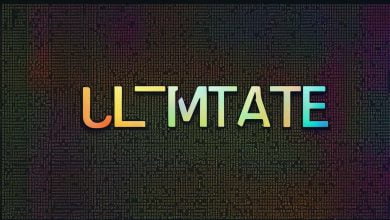
In today’s fast-paced technological world, collaboration within teams is vital to achieving success. Working together ensures that everyone can bring their unique skills and expertise to the table. However, with team members often working remotely or in different time zones, it can be challenging to share knowledge seamlessly. This is where collaborative snippet libraries come in.
Collaborative snippet libraries are a powerful tool that allows team members to store and access code snippets, templates, and other useful pieces of information easily. They enable teams to share knowledge, leverage each other’s expertise, and ultimately enhance team efficiency and productivity.
Key Takeaways
- Collaborative snippet libraries are vital for sharing and leveraging team knowledge.
- They allow teams to store and access code snippets, templates, and other useful pieces of information easily.
- Collaborative snippet libraries enhance team efficiency and productivity.
Collaborative Snippet Libraries: A Powerful Knowledge Sharing Tool
Collaborative snippet libraries are an invaluable tool for team knowledge sharing. They allow teams to create and store reusable pieces of code, templates, and other useful information that can be accessed and leveraged by team members.
A collaborative snippet library is essentially a database of code snippets and other useful resources that can be easily shared and accessed by team members. The snippets can be organized by category or project, making it easy to find relevant information quickly. This ensures that the team as a whole benefits from the expertise and experience of each individual member.
Using collaborative snippet libraries for knowledge sharing can save significant amounts of time and effort. Teams no longer need to start from scratch every time they encounter a problem or need to complete a task. Instead, they can simply access the relevant snippet from the library and apply it to their project. This reduces duplication of effort and accelerates development, ultimately resulting in improved productivity.
Collaborative snippet libraries also encourage a culture of knowledge sharing and collaboration within teams. They incentivize team members to contribute their own code snippets and templates, which can then be leveraged by other members. This in turn fosters innovation and creativity, as team members build on each other’s ideas and solutions.
How Collaborative Snippet Libraries Work
Collaborative snippet libraries can be accessed through a variety of tools and platforms. Some teams use dedicated collaboration software, while others use tools like GitHub or Google Drive.
Creating a snippet is typically a straightforward process. Team members simply create a new snippet and add the relevant code or information. This can be done in any programming language or file format. Once a snippet has been created, it can be easily shared with other team members by adding it to the library.
Searching for snippets within the library is also simple. Most collaboration software and tools provide a search bar that allows team members to search for snippets by keyword, category, or type. Natural language processing (NLP) can also be used to improve search results, making it even easier to find the right snippet for the job.
Overall, collaborative snippet libraries are a powerful tool for team knowledge sharing. They enable teams to share and leverage each other’s expertise, reduce duplication of effort, and improve productivity. Implementing best practices for collaborative snippet libraries can help teams get the most out of this powerful resource.
Leveraging Team Knowledge with Collaborative Snippet Libraries
Collaborative snippet libraries play a critical role in enhancing team efficiency and productivity by sharing and leveraging team knowledge. By accessing and applying shared snippets, teams can benefit from each other’s expertise and experience, reducing duplication of effort and accelerating development.
The key to leveraging team knowledge lies in creating a repository of code snippets, templates, and other useful pieces of information that can be easily accessed and shared. Collaborative snippet libraries make it easy for teams to share and search for code snippets, facilitating knowledge sharing and collaboration.
The effectiveness of collaborative snippet libraries can be enhanced by using natural language processing (NLP) techniques to improve the search and retrieval of relevant snippets. By applying NLP, teams can easily search a snippet library using natural language queries, reducing the time and effort required to find the right information.
Leveraging team knowledge also requires a structured approach to managing the collaborative snippet library. Teams should organize snippets using tags and categories to ensure searchability and encourage contributions from team members. Maintaining quality control is also important to ensure that the snippet library remains relevant and valuable over time.
Natural Language Processing and Collaborative Snippet Libraries
| Benefits of NLP in Collaborative Snippet Libraries |
|---|
|
Collaborative snippet libraries are a powerful tool for leveraging team knowledge and increasing productivity. With the right approach to managing a snippet library, teams can benefit from each other’s expertise and experience, reducing duplication of effort and accelerating development.
The Impact on Team Collaboration and Productivity
Collaborative snippet libraries have a significant impact on team collaboration and productivity. By providing easy access to relevant code snippets and templates, teams can avoid duplicating effort and enhance their productivity.
Moreover, the use of collaborative snippet libraries fosters a culture of knowledge sharing and collaboration within teams. It enables team members to leverage each other’s expertise and experience, leading to better quality code and more efficient development cycles.
In addition, collaborative snippet libraries help improve team communication and coordination. They provide a centralized platform for teams to store and access important information, eliminating the need for constant back-and-forth communication and allowing for faster decision-making.
Overall, the use of collaborative snippet libraries has a positive impact on team collaboration and productivity. By simplifying the sharing and leveraging of team knowledge, teams can work more efficiently and effectively to achieve their goals.
Implementing Collaborative Snippet Libraries: Best Practices
Collaborative snippet libraries are a great way to share and leverage team knowledge, but to get the most out of them, it’s important to implement them properly. Here are some best practices to follow:
- Organize your snippets: Divide your snippets into categories that make sense for your team. Keep them concise and easy to read, with clear titles and descriptions.
- Ensure searchability: Use relevant keywords and tags to make it easy for team members to find the snippet they need. Use a search function that can detect synonyms and related terms, so that nothing is missed.
- Encourage contributions: Make it easy for team members to contribute their own snippets, and be sure to give them credit for their work. Encourage collaboration by allowing comments and suggestions on each snippet.
- Maintain quality control: Have a system in place to ensure that all snippets are accurate and up-to-date. Use version control to keep track of changes to each snippet, and have a peer review process to catch any errors or inconsistencies.
- Regular updates: Snippets should be regularly updated to reflect changes in technology and best practices. Encourage team members to update their own snippets as needed, and make sure that outdated snippets are removed from the library.
Following these best practices will help you get the most out of your collaborative snippet library. Remember, the goal is to make it as easy as possible for team members to share and leverage their knowledge, and to foster a culture of collaboration and continuous improvement.
Conclusion
Collaborative snippet libraries are an essential tool for sharing and leveraging team knowledge. By providing easy access to code snippets, templates, and other useful pieces of information, teams can accelerate development, reduce duplication of effort, and foster a culture of collaboration and knowledge sharing.
Implementing collaborative snippet libraries requires careful planning and execution. Teams should focus on organizing snippets, ensuring searchability, encouraging contributions, and maintaining quality control. Regular updates and continuous improvement are also crucial in keeping the libraries relevant and effective.
At the heart of collaborative snippet libraries is the power of team knowledge. When teams share and leverage their expertise and experience, they enhance their efficiency, collaboration, and productivity. Collaborative snippet libraries are a valuable tool that every team should consider implementing.
FAQ
Q: What is a collaborative snippet library?
A: A collaborative snippet library is a collection of reusable code snippets, templates, and other pieces of information that can be shared and accessed by a team. It serves as a centralized knowledge repository, allowing team members to easily leverage each other’s expertise and save time in development.
Q: How can a team create and store snippets in a collaborative snippet library?
A: Teams can create and store snippets in a collaborative snippet library by using dedicated tools or platforms. These tools usually provide a user-friendly interface for creating and organizing snippets, and allow for categorization, tagging, and searchability to ensure easy retrieval.
Q: How can teams benefit from collaborative snippet libraries?
A: Collaborative snippet libraries allow teams to benefit from the collective knowledge and experience of their members. By sharing and accessing snippets, teams can accelerate development, reduce duplication of effort, and foster a culture of collaboration and knowledge sharing.
Q: Can snippets in a collaborative snippet library be edited or updated?
A: Yes, snippets in a collaborative snippet library can typically be edited or updated. This allows team members to constantly improve and refine the snippets based on their own experiences and feedback from others.
Q: How can teams ensure the quality of snippets in a collaborative snippet library?
A: Teams can ensure the quality of snippets in a collaborative snippet library by implementing quality control measures. This may include reviewing contributions, enforcing coding standards, and providing guidelines for documentation and usage. Regular updates and continuous improvement efforts also help maintain the relevance and accuracy of the snippets.







